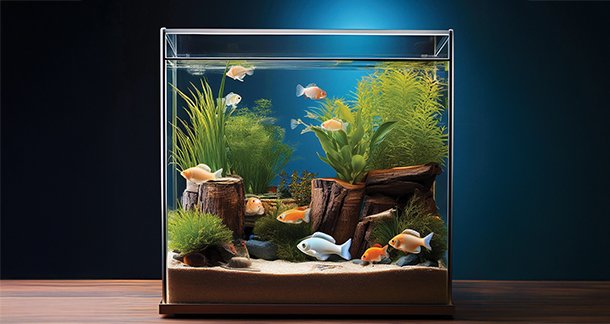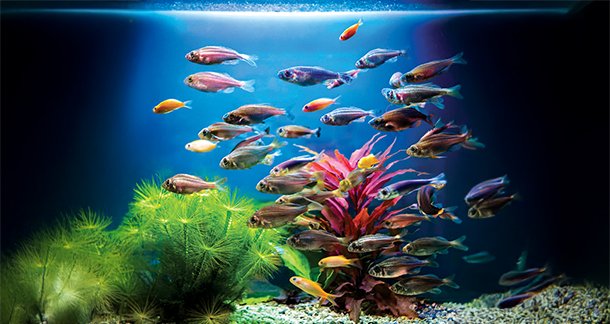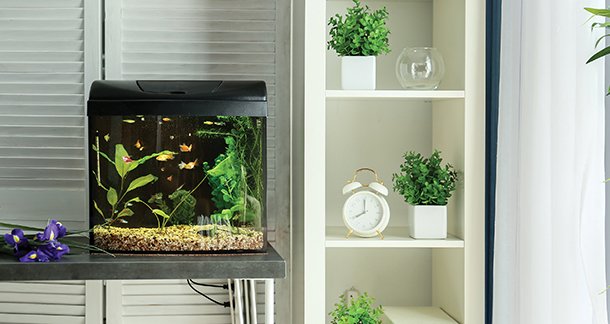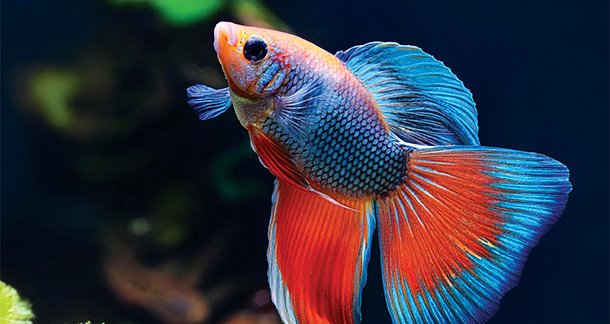Freshwater aquarium fish can be a good source of beauty and tranquillity in your home. While adopting it can make one excited, some factors should always be kept in mind for the same. This is because understanding what suits well for which species, especially food and environment is essential. Along with that, the right maintenance practices and habits are always mandatory above all.
So, this guide is to make one aware of all the key factors and criteria which will help choose the right fish and set up a suitable habitat accordingly.
The Right Tank Size is Crucial
Having an appropriate tank in terms of size and dimension is important if you want to make a suitable freshwater aquarium according to the species you are choosing. This is due to its direct impact on fish’s health and well-being. When it comes to water, a common rule is one gallon per inch of fish. Suppose you have 20 inches of fish, then a 20-gallon tank can be a comfortable fit. The larger the tank, the more stable and well-maintained it can be for maintaining water quality and temperature. Remember that fluctuations can stress fish and lead to health issues.

In terms of tank size and space requirements, it may vary according to different species. Larger species like goldfish need more room than smaller tropical fish like guppies. While a single goldfish can survive with at least 20 gallons of water due to its size and waste production, small tetras can be in smaller groups within a 10-gallon tank.
While maintaining the tank, do not forget about overcrowding, which can result in stress, aggression, and poor water quality due to more waste production than expected. So, always research the adult sizes of the fish you are going to opt for. Plus, keep the long-term requirements in mind while choosing both, your pets and the tank.
Practices and Equipment to Ensure Water Quality
Maintaining the water and its quality regularly should be the main priority to balance the fish’s health. Poor water quality can be one of the direct reasons for illness or even death of your fish. So, mandatory practices and equipment should always be there when required.
Firstly, invest in a reliable water testing kit. This is because measuring pH, ammonia, nitrite, and nitrate levels regularly is crucial to saving you from potential disasters. An ideal pH level range for almost every freshwater fish is between 6.5 to 8.0. Plus, good filtration can make most of the hurdles easy, as removing toxins and waste from the water is as important as measuring various parameters. So, a filter is a must based on your tank size and type of fish.

After measurement and filtration are done, make sure that you are changing water regularly, mostly around 25% weekly. This alone will cut harmful substances and reload the essential minerals. This will ensure overall stable water parameters and fish health.
Temperature control is another important thing to not forget at any cost. A heater or chiller should be there to keep water temperatures suitable, typically between 60°F and 78°F. Sudden temperature fluctuations are dangerous and can expose your fish to many diseases.
Choosing the Right Food and Feeding Schedule
Always feed the right diet if you want to maintain the growth and overall health of your freshwater aquarium fish. Avoiding common health issues and providing all necessary nutrients to them is possible with a balanced diet. So, always buy high-quality specific commercial foods for your fish. It may include flakes, pellets, frozen foods or other varieties. For example, algae-based foods are a good choice if you have herbivorous species while carnivorous species require protein-rich options like bloodworms or brine shrimp.
Even if the food is defined accordingly, consistency should not be ignored by any means. Typically, feeding once or twice daily is sufficient for most species and obviously, you do not want to overfeed. So, you should provide essential nutrition while keeping the excess waste build-up in control at the same time. This is because obesity-related health issues can also be a concern if not regulating food properly.
Plus, also prioritise fasting periods in between their regular feeding routine. This overall habit mimics natural feeding behaviours and helps maintain digestive health.

Social Needs of Schooling Freshwater Fishes
While keeping all the essential factors checked, remember that your fish are a creature and have social needs as well. This eventually creates a good environment for all the different varieties of freshwater fishes while living in the same tank. Schooling fish, such as neon tetras and cardinal tetras, exhibit specific behaviors, so they both can live together. This habit actually benefits them with predator avoidance as swimming in large groups helps them tackle danger.
This also helps with distributing food among all of them, leading to quicker and more successful foraging. Their stress levels decrease with an appropriate social environment just like us. Isolated fishes are more likely to suffer from stress, just provide them with a good environment and see how they become more active and behave naturally.
While caring for their social needs, understanding the dynamics is crucial too. Most species are required to be within at least six to eight individuals. Larger groups are better if possible as they showcase fully natural behaviour in that case. If you have neon tetras, keep them in a count of 8-16 to make them feel secure within themselves. It is better if you can mix different species too. Just make sure that they are made to live together and maintain a minimum number for each species to sustain a better environment for all of them.
Conclusion
The main idea is to understand what freshwater aquarium fish actually require to maintain good health and growth. Essential factors such as tank size, water quality, feeding practices, and regular maintenance are the basic and main ones to keep always in mind. And after having all the facilities checked, just take care of their social needs.
All these elements will help create an overall healthy environment for them and improve enjoyment for you as an aquarist. That’s why, take your time and plan properly before jumping into this hobby.

